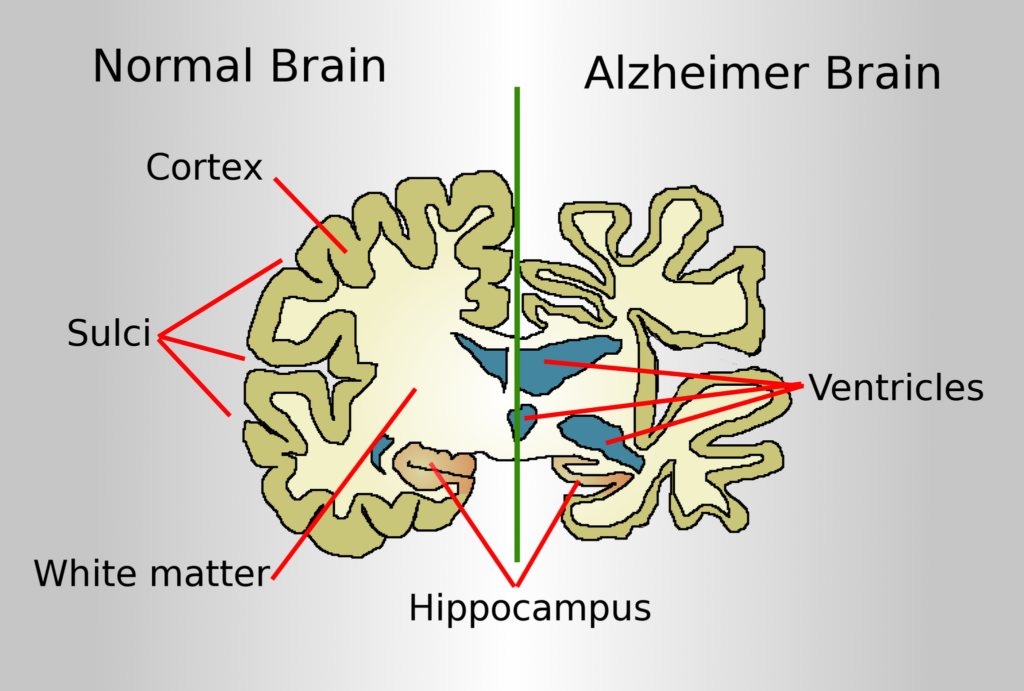Initial test results from studies conducted in India may have uncovered potential biomarkers that could be used as an early detection tool in diagnosing individuals with early-stage Alzheimer’s disease.

A group of researchers led by professor Pravat Mandal at the National Brain Research Centre (NBRC) in Manesar, Gurgaon have found a statistically significant correlation of low levels of the antioxidant glutathione (GSH) and high iron levels in the brain of Alzheimer’s patients. The study, published in Chemical Neuroscience, found that the levels of GSH in the left hippocampus were notably lower in individuals diagnosed with Alzheimer’s disease.
They theorise that GSH and iron levels are linked, and that the antioxidant plays a regulatory role in modulating iron levels and so, limiting oxidative stress. The authors do, however, note that there are limitations in the study, and that the correlation between GSH and iron in those with Alzheimer’s would need to be tested on a much larger sample population in order to definitively ascertain whether it could be used as a reliable diagnostic tool.
Such a diagnostic test could prove invaluable in early detection of Alzheimer’s disease, as often the disease is only notified once symptoms have already progressed. The neurodegenerative disease is irreversible, and so, once the symptoms have begun to prominently display, a significant degree of damage to the brain may already have occurred.
Alzheimer’s Disease International explains that “Alzheimer’s disease…accounts for “fifty percent to 75 percent of all cases [of dementia]. It destroys brain cells and nerves disrupting the transmitters which carry messages in the brain, particularly those responsible for storing memories…during the course of Alzheimer’s disease, nerve cells die in particular regions of the brain. The brain shrinks as gaps develop in the temporal lobe and hippocampus, which are responsible for storing and retrieving new information.
“This in turn affects people’s ability to remember, speak, think and make decisions. The production of certain chemicals in the brain, such as acetylcholine is also affected. It is not known what causes nerve cells to die but there are characteristic appearances of the brain after death. In particular, ‘tangles’ and ‘plaques’ made from protein fragments are observed under the microscope in damaged areas of [the] brain. This confirms the diagnosis of Alzheimer’s disease.”
Detection of early biomarkers could be a game changer. While no medication currently exists that can reverse the neurodegenerative process, options exist to manage the resultant symptoms. Alzheimer’s disease, due to the significant behavioural alterations and resultant stress is a major issue for both the patient, as well as their family. Detecting the disease early can help in addressing what are referred to as behavioural and psychological symptoms of dementia (BPSD). These can include confusion, anxiety, increased aggression and even delusions and hallucinations.
A recent study found that dementia prevalence in India is 7.4 percent among adults over the age of sixty. This places the overall figure at about 8.8 million Indians are currently living with dementia. Concerningly, this is far greater than the Dementia in India 2020 Report estimate of 5.3 million.
The study states that by 2050, over 75 percent of cases of Alzheimer’s disease and related dementias (ADRD) are expected to occur in low-and middle-income countries. India will host a significant percentage of this burden. Few countries can claim to be ready to shoulder this figure. With an ageing population across the globe, countries, and their health systems, must brace for a future where dementia becomes an everyday fact of life for a large portion of the population.

